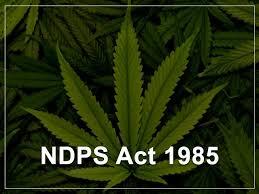Overview of the Narcotic Drugs and Psychotropic Substances Act of 1985
The Narcotic Drugs and Psychotropic Substances Act of 1985 represents a landmark in India’s legal framework to combat drug abuse and trafficking. This legislation consolidated existing drug laws into a single comprehensive Act, balancing the need to address drug abuse while allowing for legitimate medical and scientific use of controlled substances. Origins and Purpose Passed by the Indian Parliament in 1985, the Act was designed to strengthen the country’s response to drug-related issues and to align with international anti-drug treaties. It revised earlier laws, imposing stricter controls and harsher penalties to tackle drug trafficking and misuse. The Act established key regulatory bodies like the Narcotics Control Bureau (NCB) and the Narcotics Drugs and Psychotropic Substances Consultative Committee to oversee and enforce drug policies. The Act aims to meet international drug control obligations and adhere to constitutional requirements to limit harmful intoxicants. It addresses a wide range of substances, including opium, morphine, heroin, cannabis, cocaine, and amphetamines, seeking to prevent both abuse and illicit trafficking. Key Definitions and Terminology Understanding the Act requires familiarity with its key terms: – Narcotic Drugs: Substances with the potential for abuse or addiction, such as opium, morphine, and heroin. – Psychotropic Substances: Materials affecting mental processes, including LSD, MDMA, and methamphetamine. – Addict: A person dependent on narcotic drugs or psychotropic substances. – Offender: A person violating the Act’s provisions, including illegal activities related to controlled substances. – Controlled Substances: Drugs regulated by the Central Government due to their abuse potential. – Essential Narcotic Drugs: Substances like codeine and morphine permitted for medical use. – Illicit Traffic: Unauthorized activities involving narcotic drugs and psychotropic substances, such as smuggling. Enforcement and Implementation The enforcement of the Narcotics Act involves various authorities: – Central Government: Appoints the Narcotics Commissioner and other officers to manage drug policy and enforcement. – State Governments: Appoint officers to regulate and oversee drug-related activities within their jurisdictions, coordinating with the central authorities. – Additional Authorities: The Central Government can establish further bodies to support the implementation of the Act. Effective enforcement requires cooperation between central and state agencies and international partners to address the complex nature of drug trafficking. Prohibitions and Regulations The Act enforces strict regulations on activities related to narcotic drugs and psychotropic substances: – Prohibitions: Includes cultivation, production, manufacture, possession, sale, and transport, except for regulated medical and scientific purposes. – Permitted Activities: Regulated by the Central Government for medical treatment, research, and industrial purposes, such as the controlled cultivation of cannabis. – Additional Prohibitions: Includes allowing premises for illegal activities, financing or abetting such activities, and harboring individuals involved in them. Penalties and Punishments Violations of the Act are met with severe penalties: – Imprisonment: Ranges from 6 months to 20 years, depending on the offence. Repeat offenders may face up to 30 years in prison. – Fines: Can range from Rs 20,000 for possession to Rs 2 lakh for commercial trafficking. The Act also permits asset seizure related to drug offences. – Treatment: Convicts may be required to undergo de-addiction treatment at government facilities, aimed at rehabilitation and reducing recidivism. Powers of Search, Seizure, and Arrest The Act grants significant powers to law enforcement: – Search: Authorized officers can search premises and vehicles suspected of housing illicit drugs at any time. – Seizure: Includes confiscating drugs, manufacturing equipment, and related materials. Seized items must be reported to the magistrate and secured by law enforcement. – Arrest: Officers can arrest suspects without a warrant and must inform them of the grounds for their arrest, presenting them before a magistrate within 24 hours. Treatment, Rehabilitation, and Awareness The Act emphasizes treatment and rehabilitation: – Rehabilitation Centers: Established to provide medical and psychological support to addicts. – Immunity from Prosecution: Addicts seeking treatment at recognized centers can avoid legal consequences. – Awareness Campaigns: Conducted by both government and non-governmental organizations to educate the public and reduce drug abuse. Coordination with International Bodies India collaborates with international organizations to enhance drug control: – Single Convention on Narcotic Drugs, 1961: Limits drug use to medical and scientific purposes, guiding national and international cooperation. – Convention on Psychotropic Substances, 1971: Controls psychotropic substances similarly. – United Nations Office on Drugs and Crime (UNODC): Supports India with legal assistance, data collection, and infrastructure improvements to curb drug trafficking. Impact and Evolution The Narcotics Act has significantly influenced drug policy in India: – Establishment of NCB: Oversees drug law enforcement, tracking trends and coordinating with state and international agencies. – Amendments: The Act has been revised to address evolving drug threats, including expanding definitions of illicit trafficking and setting up special courts. – Criticism and Challenges: Some argue that strict penalties lead to prison overcrowding and disproportionately affect minor offenders. Conclusion The Narcotics Act of 1985 marked a decisive step in India’s fight against drug abuse and trafficking. Despite ongoing debates about its impact and effectiveness, the Act has played a crucial role in shaping the country’s approach to drug control. By combining stringent regulation with efforts in treatment and international cooperation, the Act aims to mitigate the harm caused by narcotics and safeguard public health.


